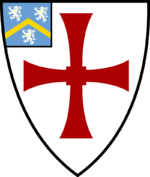Collingwood College, Durham
Collingwood College is a college of Durham University in England. It is the second largest of Durham's undergraduate colleges with around 1100 students. Founded in 1972 as the first purpose-built, mixed-sex college in Durham, it is named after the mathematician Sir Edward Collingwood (1900–70), who was a former Chair of the Council of Durham University.
| Collingwood College | |||||||||||
|---|---|---|---|---|---|---|---|---|---|---|---|
| University of Durham | |||||||||||
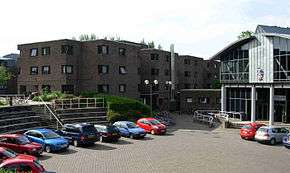 | |||||||||||
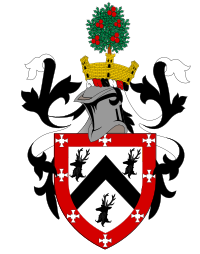 | |||||||||||
| Coordinates | 54.762778°N 1.576111°W | ||||||||||
| Motto | French: Aime le meilleur | ||||||||||
| Motto in English | Love the best | ||||||||||
| Established | 1972 | ||||||||||
| Named for | Sir Edward Collingwood | ||||||||||
| Principal | Joe Elliott[1] | ||||||||||
| Vice principal | Emma Brownlow | ||||||||||
| Undergraduates | ~1050 | ||||||||||
| Postgraduates | ~60 | ||||||||||
| Website | |||||||||||
| Map | |||||||||||
 Location in Durham, England | |||||||||||
History
Plans for Collingwood began in 1960, as part of a programme of expansion that included both Van Mildert College and Trevelyan College. By 1962 it was determined that the new college was to be built on the site of Oswald House, with Richard Sheppard (architect of Churchill College, Cambridge) being appointed the following year . The remnants of the Oswald House estate can be seen in the landscaped grounds and mature trees that surround the college. Over the following years a series of funding issues and debates over the student composition of the new college meant that building on the site did not begin until August 1971. It was determined that the new college should be called Collingwood College, a name chosen from a shortlist of three (the others being Cromwell College and Lumley College). With building not being complete until 1973, Collingwood's first cohort of 66 freshers were housed in Van Mildert from October 1972.
Buildings and facilities
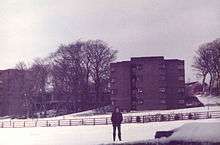
The college is located to the south of Durham city centre, on South Road. The steep incline of this road leads to Collingwood and the surrounding colleges being commonly referred to as 'Hill' colleges. Extended in 1994, Collingwood now has over a thousand students allocated to it, and approximately 550 bed spaces within the college. Accommodation is provided within three main wings: the original Durham and Northumbria wings and the newer, en-suite Cumbria wing. A separate block, York, is located away from the others and consists of flats used by fellows of the College and of the Institute of Advanced Study. Not all students live in college during their time at the university, but all students in their first year and the majority of those in their final year are allocated a place.
Although most Durham colleges are not used for teaching purposes, the college is equipped with a moderate library, music practice rooms and public computing facilities. Other welfare and entertainment facilities exist, including a bar, student-run shop, gym, television room, several common rooms, various sports facilities and a coffee shop (Collingwood being the only Durham college to have one). During the summer of 2006, the music rooms were converted into a fully equipped recording studio, with a new JCR officer position being created to run it.
The college is also a popular venue for academic conferences and other commercial events, often arranged and marketed by Event Durham. The income from these is used by the Colleges' Division to maintain and enhance college bedrooms and other facilities.
In June 2011 contractors began building work on a new gymnasium on the college campus, known as the Mark Hillery Gym. It opened in October 2012.
In 2017, the first in a series of renovations was unveiled. Collingwood now sports its own Multi-Use Games Area (MUGA), informally referred to by students as the "Collingwood Crumb". This can be booked for college sports training sessions, or for casual kickabouts when not in use by one of Collingwood's many teams.
In November 2018, after almost 18 months’ worth of building work, an array of alumni-funded state-of-the-art facilities were unveiled to the Collingwood community. These include an expansion and equipment refresh of the Mark Hillery Gym and the replacement of the Bayley Room with the purpose-built Mark Hillery Performing Arts Centre. This performing arts space has a 150-person seated capacity, and offers premium technical equipment for developing skills and producing professional productions.
The common room was also fully renovated; it is now equipped with a cinema room, pool tables, multiple televisions, as well as a relocated and fully refitted coffee shop. The college's central social hub, The Stag's Head college bar, was also renovated, bringing a dedicated darts area, conservatory and revamped bar terrace. The green space on the college grounds has also been drastically landscaped with fresh flowers and plants planted across the site.
Collingwood has also recently invested in a high quality media suite to feed the growing appetite for film and photography production opportunities.
The latest project is a brand-new, purpose-built recording studio which is well into the developmental stage of project management and should be built very soon.
Organisation and administration
The Head of College is the Principal. The incumbent Principal is Joe Elliott.[1]
List of Principals
- Peter C. Bayley (1972–1978)[2]
- Anthony Tuck FRHistS (1978–1987)[3]
- Gerald Blake (1987–2001)
- Jane Taylor (2001–2007)
- F. Edward Corrigan, FRS (2008–2011)[4]
- Joe Elliott (2011 – present)[1]
Student life
As with all colleges in Durham, the students organise and democratise themselves by creating and running a body known as the Junior Common Room, or more commonly JCR. All students of the college are JCR members unless they specifically request otherwise. The JCR is led by the Exec Committee, which consists of thirteen elected positions. Two of these positions, those of JCR President and Bar Steward, are sabbatical. There is also a Middle Common Room for mostly Postgraduates, who are usually members of the JCR as well.
The college has a number of sports clubs and societies, for example:
- The Woodplayers (Collingwood's Drama Society)
- Collingwood College Arts Society
- Collingwood College Music Society
- Collingwood Choir
- Collingwood College Fashion Show
- Collingwood College Boat Club
- Collingwood College Rugby Football Club
- Collingwood College Cricket Club
- Collingwood College Association Football Club
- Collingwood College Dance Society
Notable alumni
 Benjamin Cook, English journalist, writer, and film-maker
Benjamin Cook, English journalist, writer, and film-maker Joe Crabtree, drummer of the band Wishbone Ash
Joe Crabtree, drummer of the band Wishbone Ash
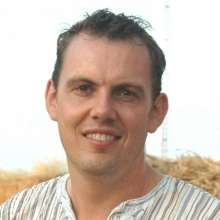 Stephen Davies, writer and children's author.
Stephen Davies, writer and children's author.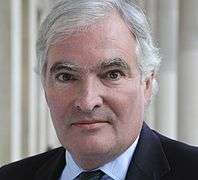 The Lord Henley, politician and Conservative member of the House of Lords.
The Lord Henley, politician and Conservative member of the House of Lords.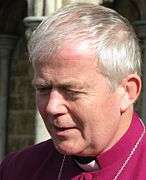 Nick Holtam, bishop of Salisbury
Nick Holtam, bishop of Salisbury David Sproxton, one of the co-founders of the Aardman Animations studio.
David Sproxton, one of the co-founders of the Aardman Animations studio. Chris Terrill, anthropologist, adventurer, author and filmmaker.
Chris Terrill, anthropologist, adventurer, author and filmmaker.
- James Cary, TV and radio writer
- Benjamin Cook, Journalist and author
- Joe Crabtree, drummer of the band Wishbone Ash
- Stephen Davies, Children's Author
- Oliver Eden, 8th Baron Henley, Conservative Politician, former Minister of State
- Peter Elleray, Formula One and Le Mans Race Car Designer
- Mark Elliott, Travel Author
- Jonah Fisher, BBC Journalist
- Tim FitzHigham, British comedian
- Lorraine Heggessey, controller of BBC One 2000–2005
- Rt. Rev Nick Holtham – BA Geog., MA Theol. – Bishop of Salisbury[5]
- Amjad Hussain, Rear Admiral Royal Navy
- Alex Loudon, Warwickshire and England cricketer
- David Kershaw, CEO of M&C Saatchi
- Rt. Hon Lord Justice Andrew McFarlane – BA Hons Law (1975) – High Court Judge, Lord Justice of Appeal[6]
- Stephen Rowbotham, Olympic rower
- Jonny Saunders, BBC Radio 2 Sports Presenter
- Will Smith, Durham County Cricket Club cricketer
- David Sproxton, Joint founder of Aardman Animations
- Chris Terrill, documentary maker, writer and adventurer
- Richard Watts, Leader of Islington Council
Gallery
 A series of views taken from Jarrow block across the college grounds between Autumn 1979 and Summer 1980
A series of views taken from Jarrow block across the college grounds between Autumn 1979 and Summer 1980 Collingwood College in c. 1979 showing the original entrance behind a gathering of students setting off for a charity event
Collingwood College in c. 1979 showing the original entrance behind a gathering of students setting off for a charity event Collingwood College in June 1991 showing the original entrance
Collingwood College in June 1991 showing the original entrance shot taken from the meadow on 26 June 1991, showing the Lilburn and Barnard wings
shot taken from the meadow on 26 June 1991, showing the Lilburn and Barnard wings Collingwood College in 1994 during the major building work that greatly increased the college's size
Collingwood College in 1994 during the major building work that greatly increased the college's size
See also
| Wikimedia Commons has media related to Collingwood College, Durham. |
References
- "Who's who". Collingwood College. Retrieved 20 March 2015.
- 'BAYLEY, Peter Charles', Who's Who 2013, A & C Black, an imprint of Bloomsbury Publishing plc, 2013; online edn, Oxford University Press, Dec 2012 ; online edn, Nov 2012 accessed 5 April 2013
- 'TUCK, Prof. (John) Anthony', Who's Who 2013, A & C Black, an imprint of Bloomsbury Publishing plc, 2013; online edn, Oxford University Press, Dec 2012 ; online edn, Nov 2012 accessed 5 April 2013
- 'CORRIGAN, Prof. (Francis) Edward', Who's Who 2013, A & C Black, an imprint of Bloomsbury Publishing plc, 2013; online edn, Oxford University Press, Dec 2012 ; online edn, Nov 2012 accessed 5 April 2013
- 'SALISBURY, Bishop of', Who's Who 2013, A & C Black, an imprint of Bloomsbury Publishing plc, 2013; online edn, Oxford University Press, Dec 2012 ; online edn, Nov 2012 accessed 5 April 2013
- 'McFARLANE, Rt Hon. Sir Andrew (Ewart)', Who's Who 2013, A & C Black, an imprint of Bloomsbury Publishing plc, 2013; online edn, Oxford University Press, Dec 2012 ; online edn, Nov 2012 accessed 5 April 2013
Further reading
- Tuck, Anthony. (1997) Collingwood College, University of Durham: A Jubilee History 1972–1997.
External links
- Collingwood College official website
- Collingwood College JCR undergraduate student organisation
- Collingwood College MCR postgraduate student organisation
- Collingwood College SCR postgraduate student and staff organisation
